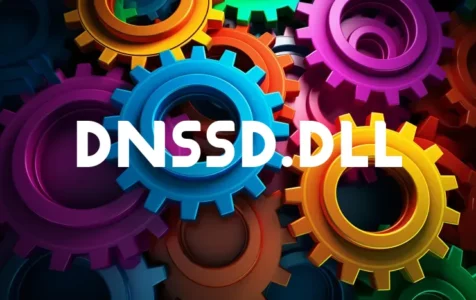The dnssd.dll is a Dynamic Link Library (DLL) file associated with Apple’s Bonjour networking service, which is part of their software ecosystem. Primarily intended for Windows operating systems, the dnssd.dll file contains a set of procedures and driver functions that may be applied by various applications. For instance, it is regularly used by iTunes to help connect to network services within a local area network (LAN).
Is dnssd.dll safe to keep on my computer?
In its genuine form, dnssd.dll is a legitimate file provided by Apple Inc. and is necessary for certain applications to run properly. If the file is located in the correct directory and has been installed as part of an application like iTunes or Bonjour, it should be safe to run.
Could dnssd.dll be a virus or malware?
The genuine dnssd.dll file from Apple is not a virus or malware. However, it’s important to ensure the dnssd.dll file on your computer is the authentic version. Malware can sometimes masquerade as legitimate DLL files, so running periodic scans of your system with reputable antivirus software is advisable.
Common Issues Associated With dnssd.dll
Users may encounter various error messages related to the dnssd.dll file, including:
Expert Tip: For smoother PC performance, consider using a PC optimization tool. It handles junk files, incorrect settings, and harmful apps. Make sure it's right for your system, and always check the EULA and Privacy Policy.
Special offer. About Outbyte, uninstall instructions, EULA, Privacy Policy.
- The program can’t start because dnssd.dll is missing from your computer.
- There was a problem starting dnssd.dll. The specified module could not be found.
- Error loading dnssd.dll. The module could not be found.
These errors can arise from a faulty application, the deletion or misplacement of the dnssd.dll file, or even corruption of the file due to malware.
How to Fix Issues Related to dnssd.dll
If you encounter issues with dnssd.dll, here are some troubleshooting steps you can try:
Method 1: Reinstalling the Associated Software
To resolve the ‘dnssd.dll not found’ error, you can try to reinstall the program that’s giving you the error, such as iTunes:
- Uninstall the program via the Control Panel.
- Download the latest version of the software from the official website.
- Run the installer as an administrator by right-clicking on it and selecting “Run as administrator”.
- Follow the installation prompts to complete the process.
Method 2: System File Checker (SFC)
The System File Checker is a utility in Windows that allows users to scan for corruptions in Windows system files and restore them. To use it:
- Open the Command Prompt with administrative privileges.
- Type
sfc /scannowand press Enter. - Wait for the scan to complete and follow any instructions provided.
Method 3: Malware Scan
Perform a full system scan with your antivirus software to ensure that the problem is not due to malware disguising itself as the dnssd.dll file.
In some scenarios, users have recommended installing or reinstalling the Airport Utility for Windows, which may also install and register the missing DLL in both 32-bit and 64-bit Windows systems.
Download and Installation of dnssd.dll
If you prefer to manually download and install the dnssd.dll file, ensure that you trust the source of the DLL file. Download the correct version of the file for your operating system’s architecture (32-bit or 64-bit) and place it in the program’s installation folder or the System32 (or SysWOW64 for 64-bit systems) folder. You may then need to register the file with the system using the regsvr32 command.
It’s recommended to only download DLL files from official sources to ensure the safety and integrity of your system. Unofficial websites offering DLL files could potentially bundle malware with their downloads.
Community Discussions and User Experiences
A user on the Apple Support Communities detailed their experience resolving this error by using a third-party utility. While this may help, exercising caution with third-party repair tools is important as they can sometimes cause further issues. As of the user’s last update, reinstalling Bonjour was suggested as a fix.
Another user share that updating drivers and performing system restores were effective ways to troubleshoot similar issues. While these methods may resolve certain problems, they may not work for everyone. It’s always a good idea to back up important files before making system changes.
In summary, dnssd.dll related errors are usually fixable through methods such as reinstalling the affected software, running system file checks, or conducting malware scans. Always ensure the integrity of the files you handle and try to get first-hand user experiences from community discussions before opting for third-party fixes.
